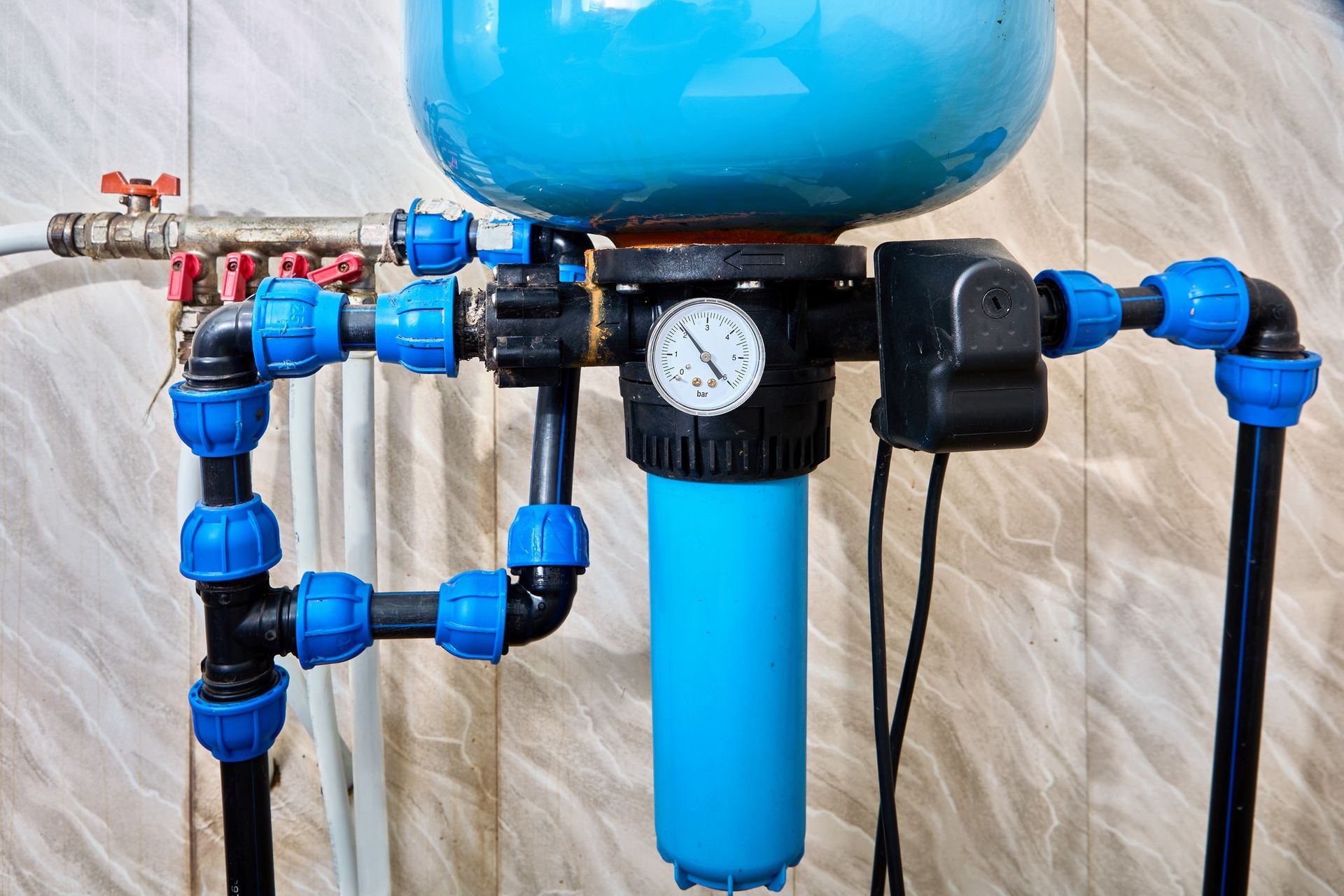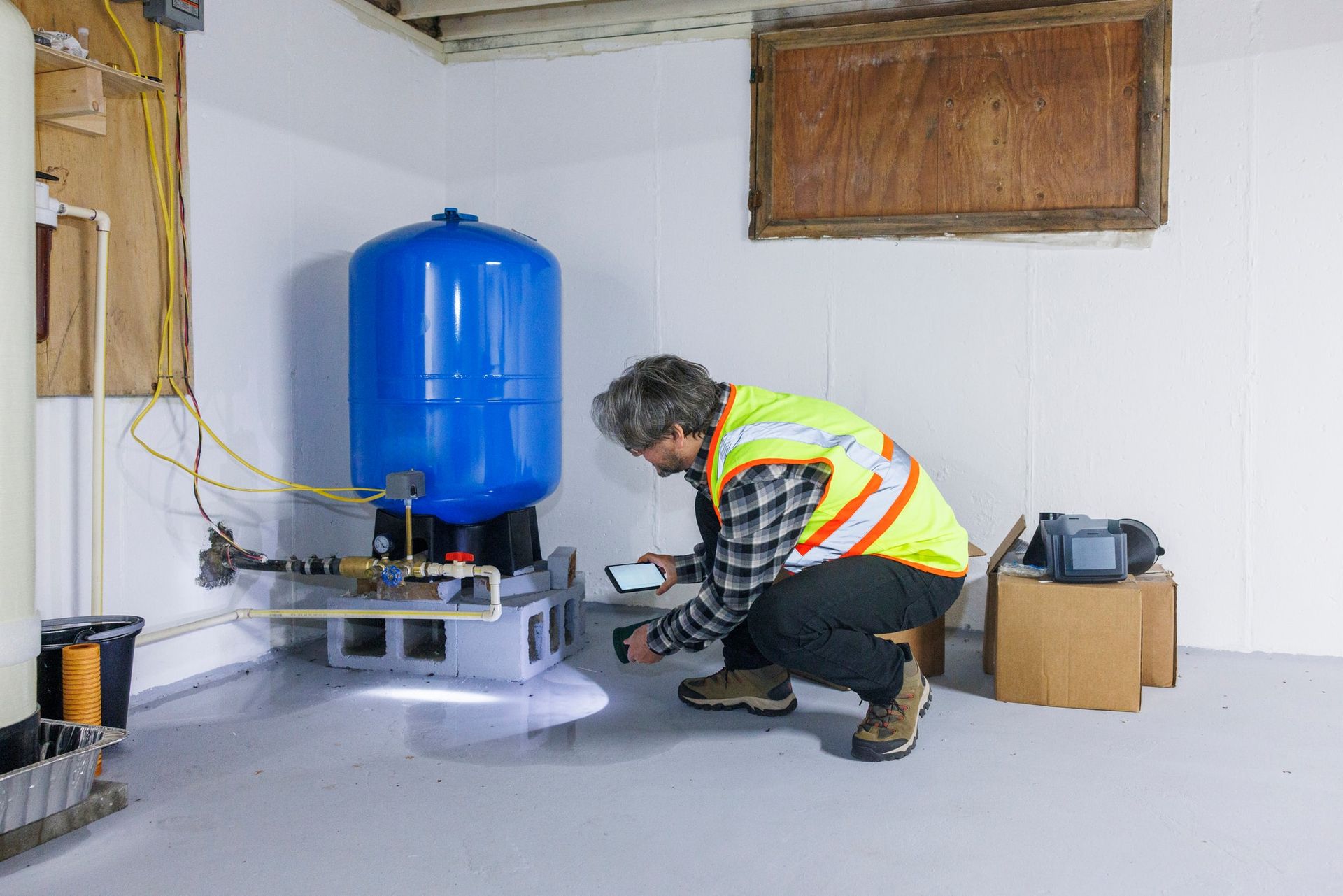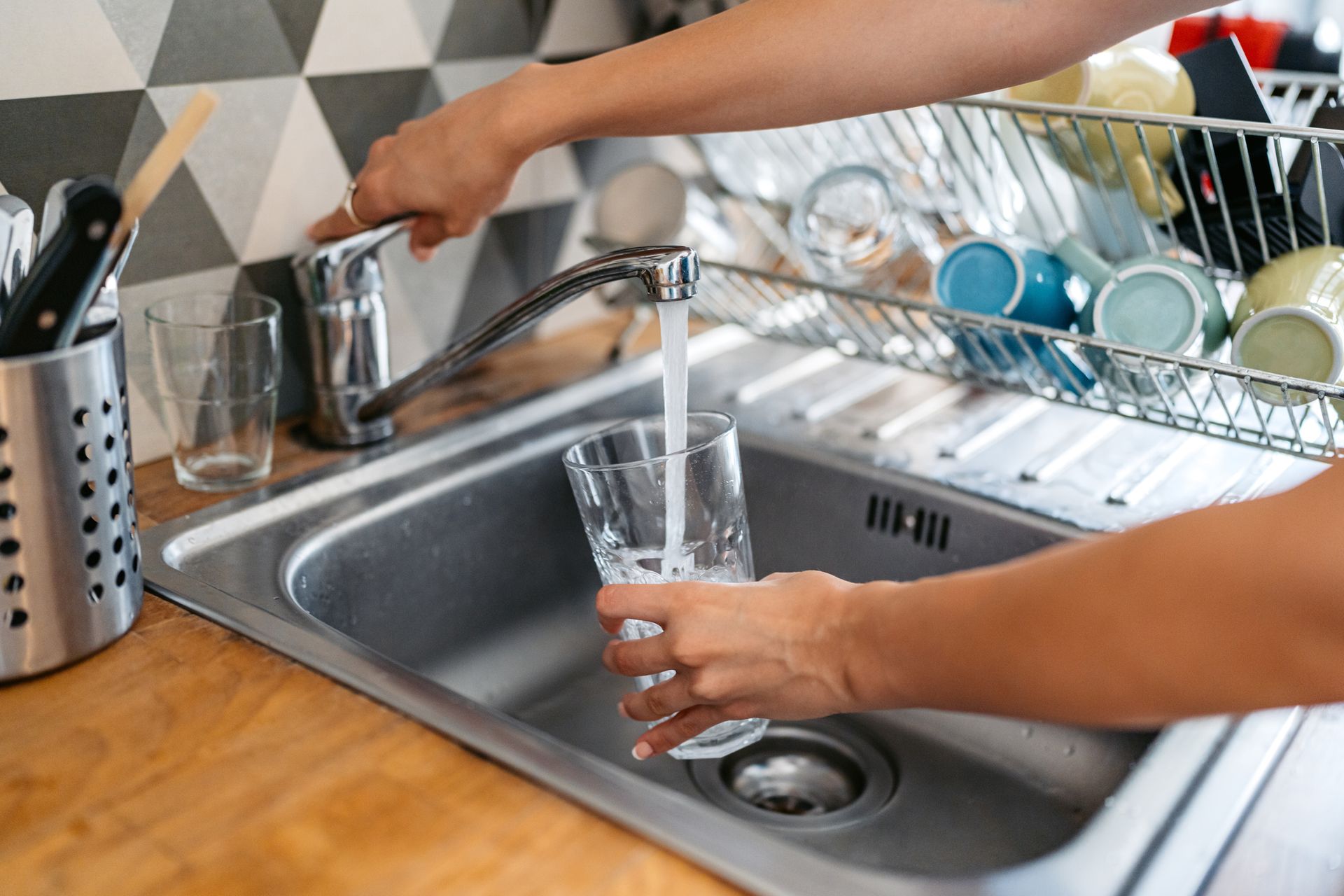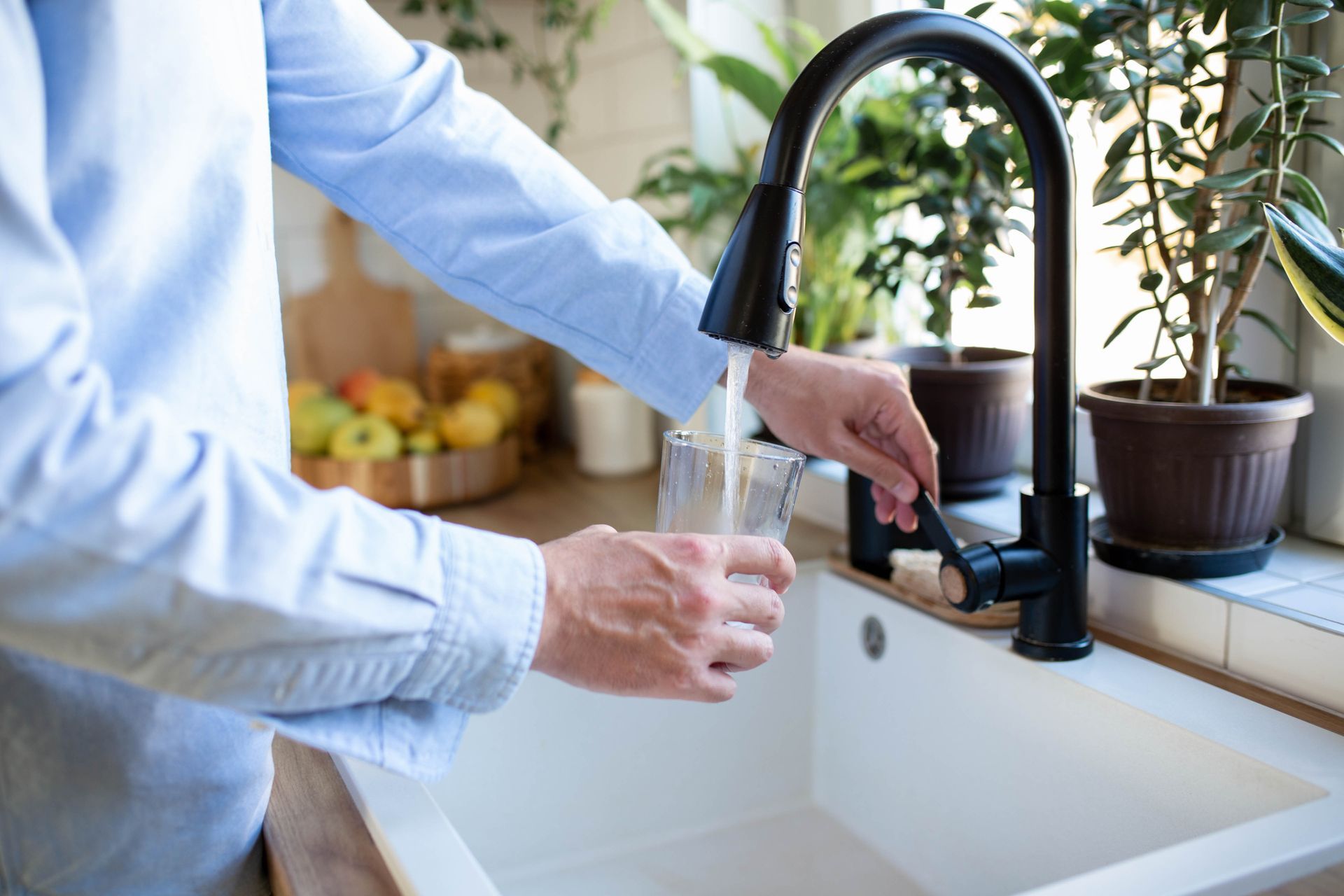How to Choose the Best Pressure Tank Water System for Your Home
A pressure tank water system ensures consistent water pressure and extends the life of your well pump. This guide explains how pressure tanks work, helps you choose the right size, and provides maintenance tips for optimal performance.
Key Takeaways
- Well pressure tanks are essential for maintaining stable water pressure in a home’s plumbing system, utilizing components like a bladder, air chamber, and pressure switch to regulate supply.
- Proper tank sizing, determined by factors such as household water demand, pump flow rate, and desired pressure settings, is crucial for efficiency and prolonging the lifespan of the well pump.
- Regular maintenance, including checking air pressure, inspecting for leaks, and flushing sediment, is vital for ensuring optimal performance and longevity of well pressure tanks.

Understanding Well Pressure Tanks
Well pressure tanks are crucial for maintaining stable water pressure in your home’s plumbing system. These tanks act as a buffer, converting well water into pressurized water suitable for household use, thus reducing the workload on the well pump.
Key components include:
- The tank itself
- A bladder or diaphragm
- An air chamber
- A pressure switch
The pressure switch monitors tank pressure, activating the well pump as needed to maintain a consistent supply of pressurized water.
These components work together to ensure a reliable water supply for your home.
How Well Pressure Tanks Work
Knowing how well pressure tanks operate highlights their importance in a home’s water system. These tanks use compressed air to create the necessary pressure that pushes water through the plumbing system. Understanding how pressure tank work is essential for maintaining efficiency.
The well pump transfers water from the well into the pressure tank, initiating the well pump cycles pressure regulation cycle.
Water Enters the Tank
The pump starts by drawing water from the well into the tank, filling it up. This initial step is crucial as it sets the stage for the entire pressure regulation process, ensuring a reliable water pump supply for your home.
Building Up Pressure
As water fill the tank, the air inside compresses, increasing air pressure. This compressed air is vital for maintaining a steady water supply.
Typically, the pressure inside the tank builds up to a preset level, often between 40 and 60 psi, creating the necessary conditions for stable water pressure throughout the home.
Supplying Water to Your Home
When you open a faucet, the pressure created by the compressed air in the tank forces water out without immediately activating the pump. This ensures an immediate supply of water, driven by the pressurized air, providing reliable water pressure for your household needs.
Sizing Your Well Pressure Tank
Properly sizing your well pressure tank extends the well pump’s lifespan and ensures efficient system operation. A correctly sized tank meets household water needs and prevents rapid on/off cycling of the pump.
Factors like well output, household water demand, and pump flow rate are critical in selecting the ideal tank size. Oversizing a tank can be beneficial as it reduces the frequency of pump cycles, although it may increase the initial cost and size.
Determining Pump Flow Rate (GPM)
The pump flow rate, measured in gallons per minute (GPM), is key to selecting the right well pressure tank size. Knowing your pump’s flow rate ensures efficient system operation, preventing pump wear and inconsistent water pressure.
High-yield wells, for instance, support continuous use with a flow rate of 10 or more GPM.
Calculating Drawdown Capacity
Drawdown capacity is the volume of water available between the system’s cut-on and cut-off pressures. Calculating this ensures efficient pump operation and reduces wear.
Higher pressure ranges can decrease drawdown capacity.
Setting the Pressure Switch
The pressure switch controls when the pump activates and deactivates. Well pressure tanks are commonly set at 30/50 psi. Another typical setting is 40/60 psi. A 30/50 psi setting enhances drawdown capacity, while a 40/60 psi setting is ideal for larger homes with high water demands.
Adjusting the pressure switch settings can achieve higher water pressure or accommodate specific household needs.

Types of Well Pressure Tanks
The three primary types of well pressure tanks are bladder tanks, diaphragm tanks, and air-over-water tanks. Each type has unique advantages and maintenance requirements.
Bladder Tanks
Bladder tanks use a flexible rubber bladder to separate air from water, ensuring efficient pressure management and preventing mixing. This design allows for consistent tank pressure and minimal maintenance.
Diaphragm Tanks
Diaphragm tanks use a membrane to separate air and water, preventing waterlogging and increasing durability. This design ensures stable pressure and reduces maintenance frequency.
Air-Over-Water Tanks
Air-over-water tanks use a layer of air above the water to maintain pressure. While easy to install and maintain, they are prone to rust and are becoming less common due to more efficient modern systems.
Factors Influencing Tank Size and Selection
Factors influencing the appropriate tank size include household water demand, well yield, recovery rate, and desired pressure range.
Household Water Demand
Household water demand significantly influences tank size, varying based on the number of fixtures and family members in the house.
Assessing these factors ensures an adequate water supply and efficient tank access operation.
Well Yield and Recovery Rate
Well yield and recovery rate are crucial for tank selection. Low-yield wells, producing less than 5 gallons per minute, often require larger tanks to store sufficient water at this point.
The recovery rate indicates how quickly a well refills after water is drawn, guiding appropriate tank size selection.
Desired Pressure Range
The desired pressure range affects tank size and selection. Standard residential systems are often set at 30-50 psi for moderate needs, while higher settings of 40-60 psi suit larger homes with higher water demands.

Maintenance Tips for Well Pressure Tanks
Regular maintenance is essential for prolonging the life and efficiency of a well pressure tank. This includes checking air pressure, inspecting for leaks, and flushing sediment.
Checking Air Pressure
Checking the air pressure in your well pressure tank maintains stable water pressure. This involves turning off the pump power, draining the tank, and using a pressure gauge to measure the air pressure.
The ideal air pressure should be set at 2 psi below the cut-on pressure of the pressure switch, and adjustments can be made using an air compressor.
Inspecting for Leaks
Regularly inspecting for leaks prevents water wastage and system damage. Look for water stains or moisture around the tank and check for rust or corrosion, as a tear can also indicate potential issues.
This proactive approach generally ensures the system operates efficiently and eventually avoids costly repairs.
Flushing Sediment
Flushing sediment from the tank maintains water quality and system efficiency. Sediment build-up can decrease water quality and system performance, so periodic flushing is recommended.
Benefits of Properly Sized Well Pressure Tanks
A properly sized well pressure tank reduces pump cycling and reducing pump cycling promotes frequent cycling, extends pump lifespan, and ensures consistent water pressure. It also maintains system efficiency and lowers energy costs.
Acting as a buffer, the tank regulates water pressure and decreases the well pump’s workload, ensuring a steady water supply throughout the home.
Summary
Selecting the right well pressure tank involves understanding how these systems work, proper sizing, and regular maintenance. A correctly sized tank ensures reliable water pressure, protects the well pump, and enhances overall system efficiency. By following the guidelines in this comprehensive guide, homeowners can enjoy a stable and efficient water system. For further assistance or consultation, consider reaching out to Wragg Brothers Well Drilling, your trusted provider of water well services.
Frequently Asked Questions
What is the purpose of a well pressure tank?
A well pressure tank serves to maintain stable water pressure in the plumbing system while minimizing the strain on the well pump. This ensures efficient operation and longevity of the water system.
How do I determine the right size for my well pressure tank?
To determine the right size for your well pressure tank, evaluate the pump flow rate, household water demand, well yield, and the desired pressure range. This assessment will guide you in selecting an appropriately sized tank.
What are the common types of well pressure tanks?
The common types of well pressure tanks include bladder tanks, diaphragm tanks, and air-over-water tanks. Each type serves specific applications and has distinct advantages in maintaining water pressure.
How often should I perform maintenance on my well pressure tank?
Regular maintenance on your well pressure tank should be performed periodically to ensure optimal performance, including checking air pressure, inspecting for leaks, and flushing sediment. This proactive approach will help maintain the efficiency and longevity of your system.
Why is my well pressure tank short cycling?
Short cycling of your well pressure tank is likely due to an improperly sized tank, incorrect pressure switch settings, or issues such as sediment build-up or air leaks. Addressing these factors can help resolve the cycling issue effectively.


